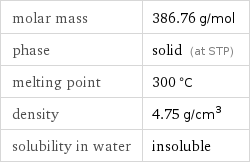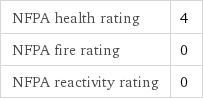Input interpretation

arsenic(III) selenide
Chemical names and formulas

formula | As_2Se_3 name | arsenic(III) selenide alternate names | arsenic(III) triselenide | arsenic selenide | arsenic sesquiselenide | arsenic triselenide mass fractions | As (arsenic) 38.7% | Se (selenium) 61.3%
Lewis structure

Draw the Lewis structure of arsenic(III) selenide. Start by drawing the overall structure of the molecule, ignoring potential double and triple bonds: Count the total valence electrons of the arsenic (n_As, val = 5) and selenium (n_Se, val = 6) atoms: 2 n_As, val + 3 n_Se, val = 28 Calculate the number of electrons needed to completely fill the valence shells for arsenic (n_As, full = 8) and selenium (n_Se, full = 8): 2 n_As, full + 3 n_Se, full = 40 Subtracting these two numbers shows that 40 - 28 = 12 bonding electrons are needed. Each bond has two electrons, so in addition to the 4 bonds already present in the diagram add 2 bonds. To minimize formal charge selenium wants 2 bonds and arsenic wants 3 bonds. Identify the atoms that want additional bonds and the number of electrons remaining on each atom: Fill in the 2 bonds by pairing electrons between adjacent highlighted atoms: Answer: | |
Basic properties

molar mass | 386.76 g/mol phase | solid (at STP) melting point | 300 °C density | 4.75 g/cm^3 solubility in water | insoluble
Units

Solid properties (at STP)

density | 4.75 g/cm^3
Units

Thermodynamic properties

molar heat of fusion | 40.8 kJ/mol specific heat of fusion | 0.105 kJ/g (at STP)
Chemical identifiers
[Se][As]=[Se] InChI identifier | InChI=1/As2Se3/c3-1-5-2-4 RTECS number | CG2285000 MDL number | MFCD00014166](../image_source/4b93ba5b795c4994164dd7039db92f02.png)
CAS number | 1303-36-2 PubChem CID number | 14772 SMILES identifier | [As](=[Se])[Se][As]=[Se] InChI identifier | InChI=1/As2Se3/c3-1-5-2-4 RTECS number | CG2285000 MDL number | MFCD00014166
NFPA label

NFPA label

NFPA health rating | 4 NFPA fire rating | 0 NFPA reactivity rating | 0
Toxicity properties

odor | odorless

RTECS classes | other